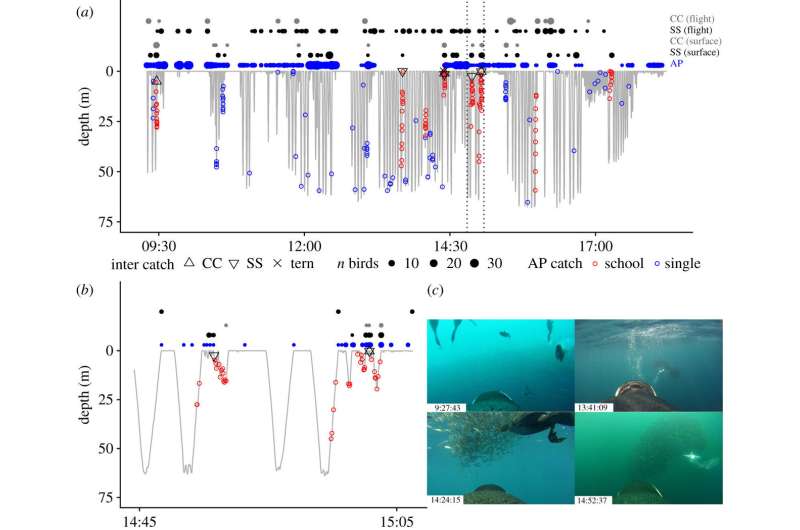June 5, 2019 report
Study shows penguins attract seabirds when they corral fish

A pair of researchers with Mandela University has found that when African penguins work together to corral fish, they attract seabirds intent on taking advantage of the suddenly available prey. In their paper published in the journal Royal Society Open Science, Alistair McInnes and Pierre Pistorius describe their multi-year study of African penguins and what they learned about them.
African penguins are the only penguins that live off the shores of Africa, and they are endangered—population levels are 70 percent lower than they were just 15 years ago. Prior studies have shown that the primary reason for their decline is a decrease in their food supply—sardines and anchovies and other small fish. Humans use nets to catch the same fish, leaving little for the penguins to eat. In this new effort, the researchers sought to learn more about the eating habits of the penguins in hopes of finding a way to save them from extinction.
To study the penguins, which are a type of diving bird, the researchers taped small cameras to their backs during the breeding seasons over the years 2015 to 2018. During breeding season, penguin parents take turns watching the young while the other goes foraging. This behavior made it relatively easy for the researchers to capture and affix and remove cameras.
The researchers report that among other things, they found that the penguins routinely dove as deep as 30 meters when seeking prey. They also engaged with one another in corralling, a behavior often seen in dolphins, in which the penguins work together to force a school of fish to bunch closer together while also moving them closer to the shore. Doing so makes it far easier to catch a lot of fish in a very short amount of time. The researchers also report that they found that the corralling behavior of the diving birds attracted the attention of seabirds who were eager to catch and eat some of the fish the penguins drove to shallow water. The researchers noted that larger groups of penguins working together attracted larger numbers of seabirds. They suggest the efforts by the penguins may play a role in the survival abilities of some seabirds.
More information: Up for grabs: prey herding by penguins facilitates shallow foraging by volant seabirdsRoyal Society Open Science (2019). royalsocietypublishing.org/doi/10.1098/rsos.190333
Journal information: Royal Society Open Science
© 2019 Science X Network




















